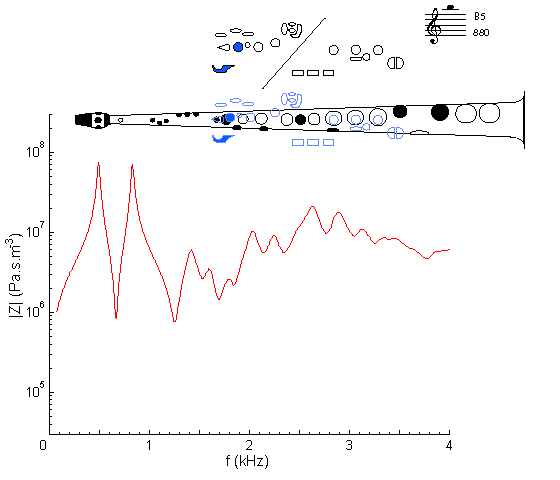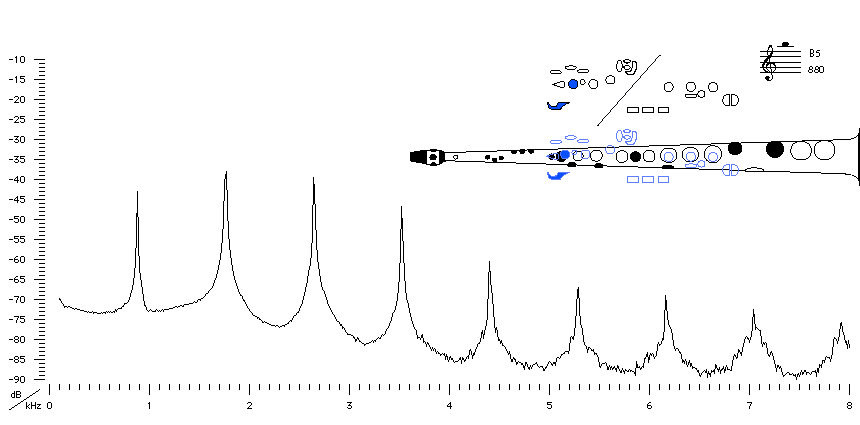| Acoustics of the saxophone |
Bb soprano saxophone |
B5 |
 |
Fingering Acoustic schematic Non-specialist introduction
to acoustic impedance Notes are the written pitch. |
This is the tenth note in the second register. It differs from B4 (the corresponding note in the first register) in that it uses a register hole. This causes a leak in the bore that weakens the first impedance peak, but has little affect on higher peaks – see register hole for an explanation, and compare with B4, whose impedance spectrum is almost identical except for the first peak. Above about 1 kHz, the third peak is weakened and the rest of the curve is irregular: see the discussion in cut-off frequency. Above this frequency, the spacing of peaks in the upper part of the curve roughly equals that in the curve for the lowest note, A#3. This is because, at high frequency, the wave propagates past the open tone holes, reflecting only at the bell.
Compare with the impedance spectrum for a tenor sax on written B5: same fingering but sounding one octave lower.

Sound spectrum
of a Bb soprano saxophone
played using fingering for B5.
For more explanation, see
Introduction to saxophone acoustics.
|
Contact:
Joe Wolfe
/ J.Wolfe@unsw.edu.au |